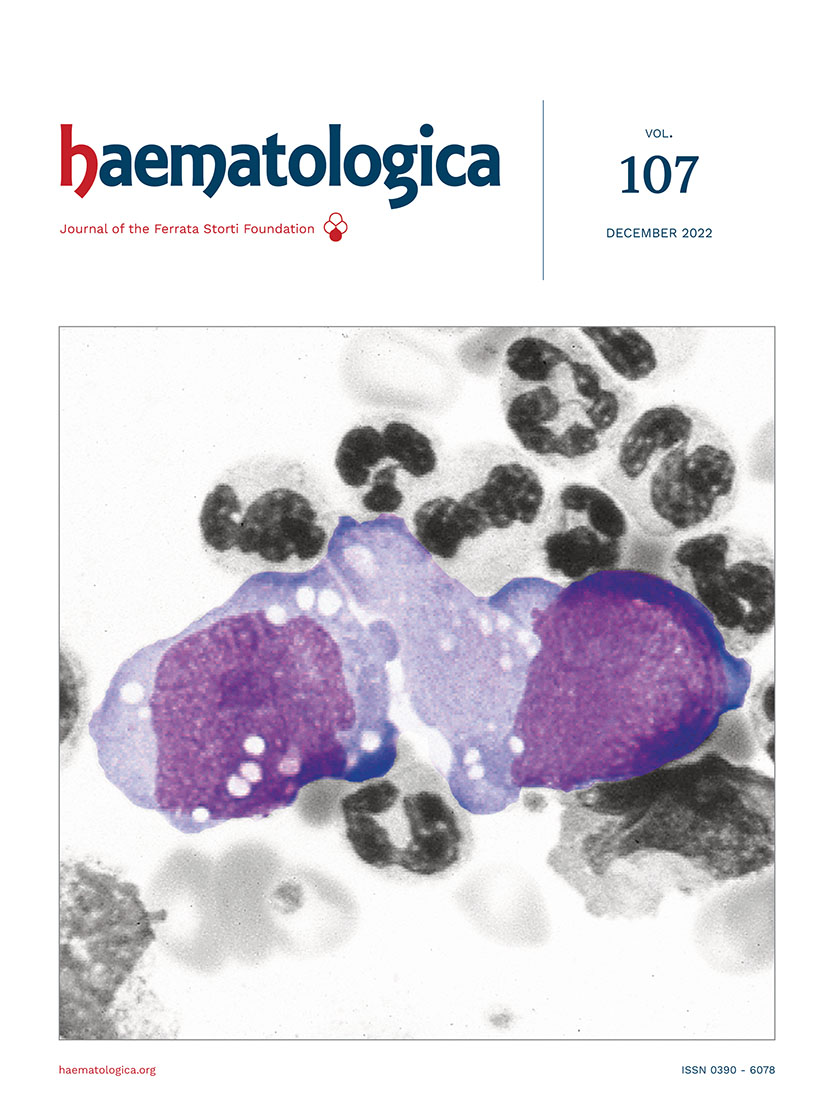ALK-negative anaplastic large cell lymphoma (ALCL), now included as a full entity in the group of mature T- cell neoplasms, is characterized by very large cells with abundant cytoplasm and prominent nucleoli. These cells are strongly positive for CD30 and in more than half of all patients they express one or more T-cell antigens such as CD2, CD3, CD4 and CD43. By definition, ALK protein is undetectable. Most patients present with advanced disease, peripheral and/or abdominal lymphadenopathy and B symptoms. Besides cutaneous T-cell lymphoma, this type of peripheral T-cell lymphoma may also show, albeit rarely, a leukemic picture at presentation. In particular, as illustrated in the Figure, showing a buffy coat smear from a patient with ALK-negative ALCL, circulating and also bone marrow infiltrating cells may be enormous with a monstrous appearance. Sometimes, multinucleated cells and cells with eccentric, horseshoe-shaped or kidney-shaped nuclei are observed. Cells are larger and more pleomorphic in ALK-negative ALCL than in ALK-positive ALCL. Moreover, ALK-negative ALCL is characterized by older median patients’ age and a more aggressive clinical course than ALK-positive ALCL. Some genetic abnormalities in ALK-negative ALCL are of possible prognostic importance, but none of them has an established diagnostic role.1
Footnotes
Correspondence
Disclosures
No conflicts of interest to disclose.
References
- Invernizzi R. Mature T- and NK-cell neoplasms. Haematologica. 2020; 105(Suppl 1):162-170. Google Scholar
Figures & Tables
Article Information

This work is licensed under a Creative Commons Attribution-NonCommercial 4.0 International License.

